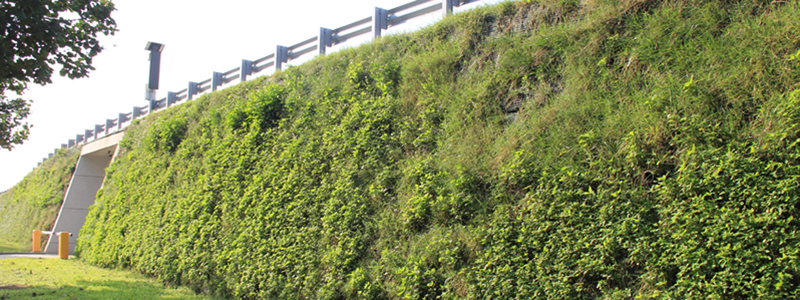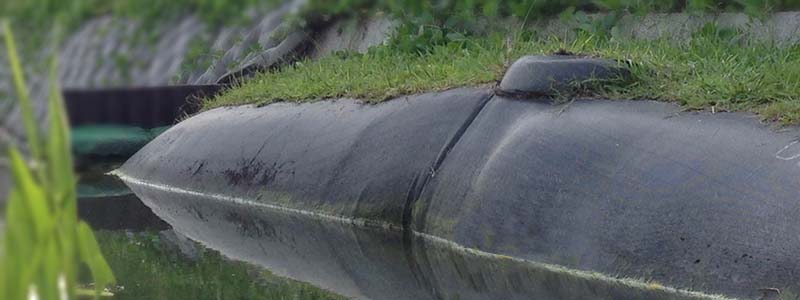 How to Create “Green” Environment Using Geosynthetics?
How to Create “Green” Environment Using Geosynthetics?
Ecology Environment Reservation:
Geosynthetics such as geogrid and geotextile have openings through their bodies which can allow the passage of roots and water. Therefore, creatures’ living spaces are free from over-interrupted and original ecology environment can be reserved.
Landscape Greening:
The apertures on geosynthetics make the room for plant roots to stretch into soils. Therefore, plants can grow on geosynthetic structures (e.g., wrap-around reinforced slope or retaining wall) and then increase their vegetation area, which is beneficial for beautifying environment, controlling local atmosphere’s temperature, enhancing environment comfort, and contributing to carbon sequestration.
Base Water Sustaining:
The apertures on geosynthetics can prevent the water from being blocked by construction structures, and ensure the natural or artificial soil layers within the base are able to contain water and retain rainwater. On the other hand, some geosynthetic materials such as geonet and geopipe are designed fordrainage. When they are properly used, the surface runoff of rainwater can be reduced effectively and finally decrease the loading of downstream waterway.
Choosing Natural Materials:
Using natural materials instead of artificial materials can be beneficial for lowering environmental impact caused by the later ones. For example, applying geomatfor slope vegetation is a “greener” way to control erosion than shotcrete because the concrete sprayed on slope would interrupt rainwater infiltration and plants living which is crucial for the reservation of original environment.
Downsizing Construction Scale to Lower the Impact on Ecology:
It is inevitable that the constructionsite and its surroundings would be influencedby construction process. Therefore, not only site selection should be done carefully but minimized and reasonable scale of construction has to be considered. Because geosynthetics includes materials with diverse functions or even with composite functions, they can be applied flexibly in accordance with in-situ site conditions. When using them properly, the scale downsizing could be achieved effectively.





 How to Create “Green” Environment Using Geosynthetics?
How to Create “Green” Environment Using Geosynthetics? How to Adopt “Green” Engineering Methods Using Geosynthetics?
How to Adopt “Green” Engineering Methods Using Geosynthetics? How to Select “Green” Materials?
How to Select “Green” Materials?




